September 29, 2022 Joshua Ruskin
Microsoft Advertising: What’s New in 2022
Categories:
Tags:
2021 has been marked by innovation, reinvention, and unwavering commitment. While companies worldwide have been rebuilding, reorganizing, and adjusting to the new normal, our valuable partners have remained dedicated to supporting the growth of their clients through Microsoft Advertising and exploring new avenues for outreach.
Here are some updates on Microsoft Advertising this 2022.
Updates on campaign time zones.
Time zones are no longer adjustable at the campaign level as of March 2022; they will now directly match your account-level choice. This preserves uniformity for data used in reporting and invoices. Please be aware that the amount invoiced on your billing documents won’t change, even though reporting data may reflect slightly greater or lower amounts of spend on the day this one-time adjustment takes place.
To ensure its correctness for all your advertising needs, Microsoft recommends that you review your account’s time zone. If you have any questions, contact support or your account manager.
Audience Network Market Expansion
Microsoft’s native advertising solution, Microsoft Audience Ads, is accessible in 39 new markets starting in April 2022. India, Indonesia, Malaysia, the Philippines, Singapore, Thailand, Vietnam, Hong Kong Special Administrative Region, Japan, and Taiwan are among the APAC markets. Albania, Andorra, Bosnia and Herzegovina, Bulgaria, Croatia, Cyprus, the Czech Republic, Estonia, Greece, Hungary, Iceland, Latvia, Liechtenstein, Lithuania, Luxembourg, Malta, Monaco, Montenegro, North Macedonia, Poland, Portugal, Romania, San Marino, Serbia, Slovakia, Slovenia, South Africa, Turkey, and Vatican City are among the EMEA markets.
Smart Campaigns is now accessible in three new nations.
Smart Campaigns are a straightforward solution for companies to advertise on the Microsoft Search Network if you’re a smaller advertiser. You now have the opportunity to do so using Smart Campaigns in Canada, France, and Germany. You may now save time by using Microsoft Advertising to automate the construction and maintenance of campaigns because we recently extended to those three areas.
Shopping Campaigns with Enhanced Reporting
Microsoft Ads recently introduced two new improvements to reports for Shopping Campaigns, giving users a better way to comprehend how well their products are performing. Performance, the first improvement, offers information on impressions and clicks, average costs, and spending. The second improvement is “Conversions,” which displays data on all conversions, revenue, and return on advertising spend (ROAS). Microsoft completed the Shopping Campaign’s hat trick by enhancing the grid on the Products page, which now displays the options “filtered total,” “removed items total,” and “overall total” at the bottom of the grid.
Removed the requirement for a minimum spend on customers.
Microsoft Ads decided to remove restrictions from their Customer Match targeting feature in response to the so-called “cookie-pocalypse,” “[making] it possible for more of you to use this feature that plays an important role in moving into the cookieless world.” The feature is a crucial component of remarketing campaigns, allowing businesses to upload their customers’ email addresses and reengage with them on various platforms that use the Microsoft Sear system. Customer Match lists have different standards, particularly in light of global privacy concerns. These issues also prevent the feature from being offered in markets like China, the United Kingdom, and the European Union.
Marketing with Purpose Attributes
Microsoft Advertising introduced its “marketing with purpose qualities,” which are meant to be served within advertising, to assist firms in communicating their beliefs, standing out from rivals, and promoting their initiatives towards inclusivity and/or social obligations.
Microsoft Advertising launched these attributes to foster better, stronger relationships between brands and their consumers, stating that “great relationships start here.” They did this by pointing out their understanding of how important trust and authenticity are to consumers, and how communicating this is important in generating value for your brand and online users.
Even though only roughly 32 qualities are currently available, more are probably on the way. The current list is divided into four categories (inclusion, environmental protection, community service, and accessibility), and it is as follows:
Inclusion
- Vegan
- LGBTQI+ -friendly
- Unisex
- Allergy-friendly
- Pet-friendly
- Family-friendly
- Kosher
- Halal
- Alcohol-free
- Gluten-free
- Vegetarian
Environmental
- Eco-friendly
- Carbon-neutral
- Sustainable
- Carbon-negative
Community/Social Responsibility
- Cruelty-free
- Non-profit
- Supports a cure
- Local business
- Small business
- Family-owned
- Minority-owned
- Black-owned
- Supports disease research
- LGBTQI+ – owned
Accessibility
- Wheelchair accessible
- Visual assistance
- Hearing assistance
- Mobility assistance
- Touchless pickup
- No-contact delivery
- Web Accessibility
Microsoft Advertising makes setup easy, too! Attributes can be added at the ad account level, with steps as follows:
- Navigate to All Campaigns.
- Click on Settings.
- Check all attributes that apply to your account.
- Click Save.
Growing Imagery in Search: Visual Storytelling’s Rise
Bing’s search advertisements and page results may change significantly due to Microsoft’s ambitious intentions.
Microsoft wants to set itself apart with a new emphasis on visual narrative by utilizing graphics and what they call “visually immersive upgrades” to the advertising experience for its consumers and advertisers. You can read more about their grand strategy here, along with the following intriguing future features:
- Rich Visual Assets in Search and Native Ads
- Image and Video Collages for Exploratory Queries
- Reconfiguration of Search Pages to Prioritize Imagery
- New, Responsive Multimedia Ads
- Unique Approach to Search Ad Image Extensions
- Microsoft Audience Network Native Ad Placements on MSN, Microsoft Edge, Outlook, Etc.
- Search Ads New Video Extensions
- Asset Imports from Facebook and Google and Smart Effects Asset Editing
Many more features are highlighted in Microsoft Advertising’s post on visual storytelling, and they are all exciting!
Key Takeaway
The main lesson from this list is that Microsoft Advertising is improving its platform to be easier to use, more engaging, and beneficial to both consumers and advertisers.
Businesses and advertisers gain from better reporting, broader access, and discoveries of fresh approaches to increase user engagement. These developments also strengthen the case for brands to incorporate the platform in their marketing mix if they haven’t done so previously.
Microsoft Advertising is sometimes left out of the given priority channels because it receives significantly less traffic than Google. Still, the traffic it does receive has a greater conversion rate and is typically cheaper to buy. Perhaps Microsoft Ads will be in a better position to raise their percentage market share due to the adoption of new visual storytelling techniques (and both the advantages these new formats give customers and their propensity to improve engagement).



